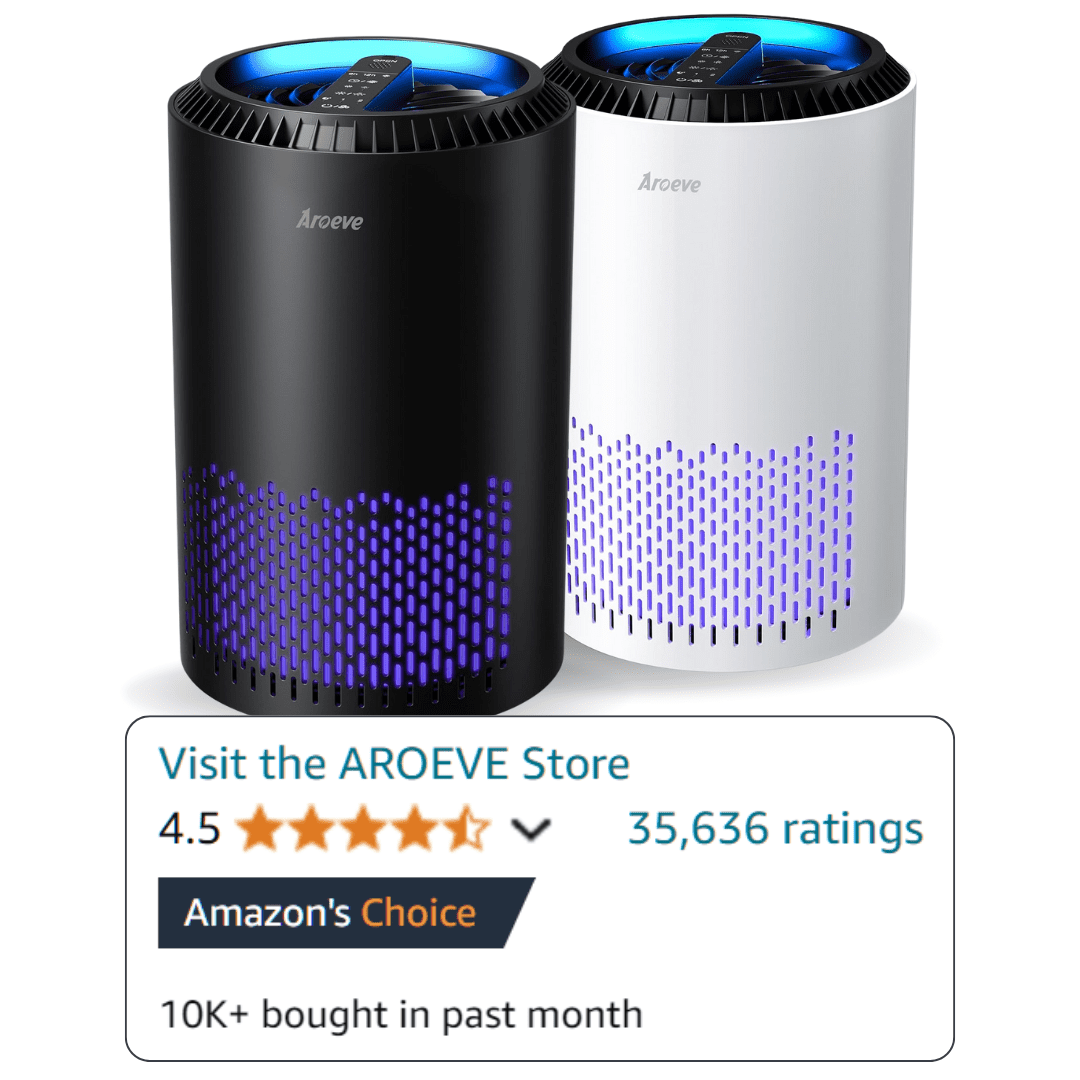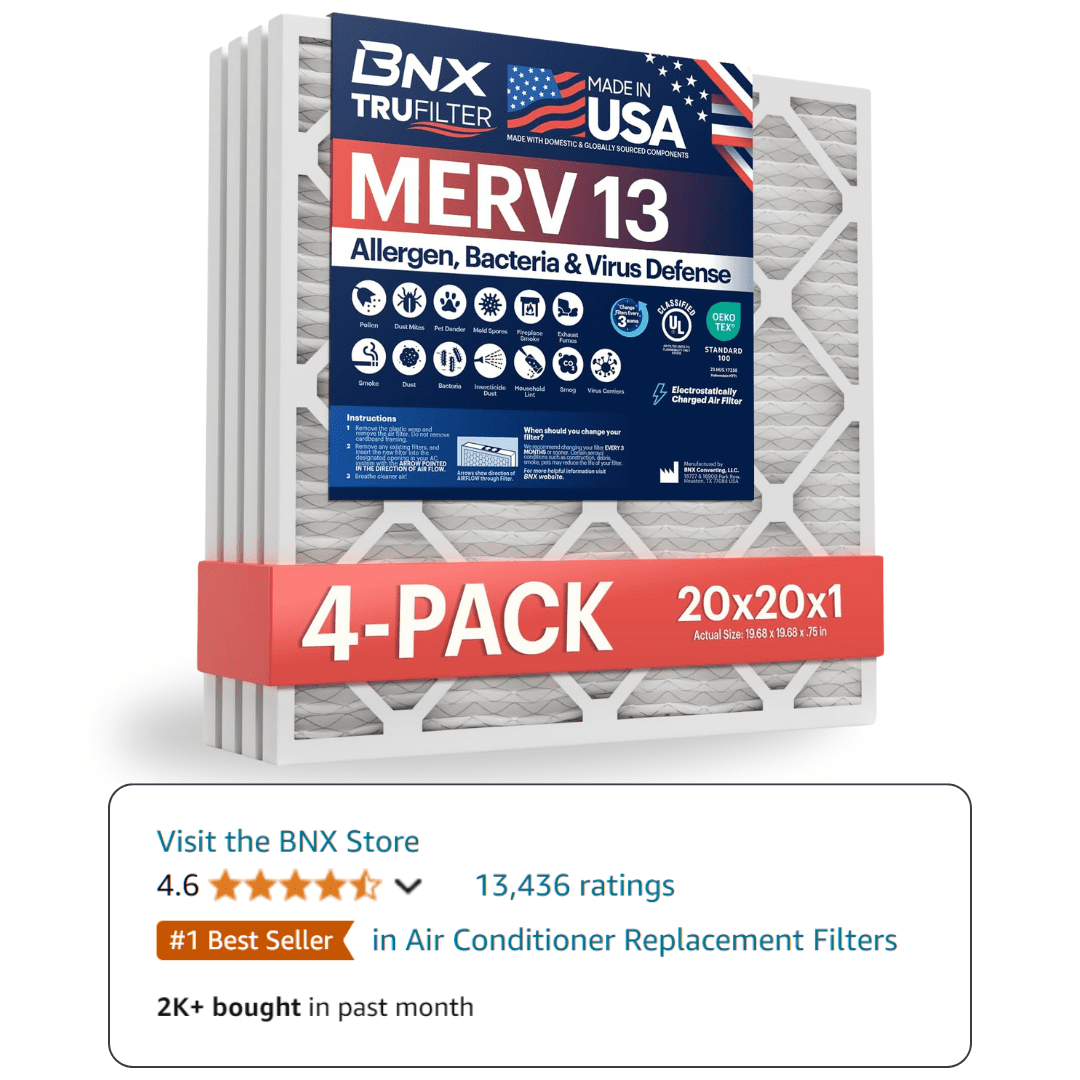For years, I dreaded the winter months and allergy seasons, waking up every morning with a scratchy throat and stuffy nose. The culprit? Dry air from constantly running my apartment’s heater and AC. It wasn’t just annoying—I felt tired, I couldn’t sleep well, and my skin always itched. After trying countless home “remedies,” it was a simple humidifier setup that finally made a big difference for my breathing—and I wish I’d tried it sooner.
Humidifiers are one of the easiest and most affordable ways to add comfort and relief to any bedroom or apartment. In this guide, I’ll share exactly how I improved my indoor air quality, step-by-step setup instructions, real results, and the best affordable humidifiers I’ve actually used. Whether you’re struggling with sinus dryness, sore throat, or just want better sleep, this is for you.
Why Dry Indoor Air is a Problem (and How It Affects Your Health)
When your air gets too dry—especially from AC or heating—you notice it fast. Your nose and throat feel scratchy. Your skin may be flaky or itchy. Sometimes your lips even crack. For me, the worst was waking up at 3 AM, unable to breathe through my nose.
Here’s what happens: Most homes and apartments have an ideal indoor humidity of 30–50%. But heaters and air conditioners strip moisture from the air, sometimes dropping humidity down to 15% or even lower. That’s much drier than a desert!
Low humidity affects you by:
- Drying out your sinuses, making you more likely to get nosebleeds or sinus infections
- Causing sore throat and cough, especially overnight
- Irritating your airways if you have allergies or asthma
- Cracking and drying your skin and lips
- Making it harder to sleep due to stuffy nose and dry mouth
If you’re someone who gets nosebleeds, struggles with allergies, or just feels miserable during winter or allergy season, low humidity could be at the core of your problems. Common signs your air is too dry: static shocks, wilting houseplants, itchy skin, dry/tight feeling in your nose or throat.
Even the CDC and Mayo Clinic say a humidifier can help relieve these symptoms and improve your indoor air quality.
What Is a Humidifier? — Types and How They Work
A humidifier is a small appliance designed to add moisture (humidity) into the air. This can instantly help with dry air symptoms—from dry skin to sinus pain—and help you breathe and sleep better.
There are four common types of humidifiers you’ll see on the market:
- Ultrasonic (Cool Mist): Uses ultrasonic vibrations to push cool water vapor into the air. Quiet, very energy efficient, and safe (no boiling water). Best for bedrooms/apartments.
- Evaporative: Fan blows air through a wet wick or filter, releasing invisible mist. Reliable and good for medium spaces, but can be a bit louder.
- Warm Mist (Steam): Boils water to make steam. Great for killing germs, but uses more energy and gets hot—usually not ideal around kids or pets.
- Hybrid: Combines two of the above (often ultrasonic + evaporative), but often more expensive and less simple.
For most people, especially if you’re trying to set up a simple humidifier setup for a bedroom or apartment, a cool mist ultrasonic humidifier is the best bet. They’re affordable, very effective, energy efficient, and much safer than the models that use boiling water.
Tip: Compact, portable models often work great for single rooms and small spaces, so you don’t need to spend a fortune to get results.
My Simple Humidifier Setup — Step-by-Step
After weeks of research (and wasting money on failed “home hacks”), I decided to try a basic, budget-friendly cool mist ultrasonic humidifier. Here’s exactly how I did it:
Why I Chose a Budget Cool Mist Model
I wanted something affordable (under $40), as quiet as possible (I’m a light sleeper), with a decent water capacity so I wouldn’t have to refill it constantly. I found many name-brand models met these criteria, and there were plenty of reviews from real users in similar small spaces.
Quick Checklist — What to Look For
- Water tank at least 1 liter (lasts through the night)
- Auto shutoff for safety (prevents damage if the tank runs dry)
- Quiet operation (under 35 decibels claimed is best for sleep)
- No required filters, or washable ones for easy cleaning
- Easy to fill and carry (look for a top-fill design if possible)
Step 1: Picking the Right Spot
I placed my humidifier on a waist-high bedside table, about 3 feet from my bed and at least 2 feet from any electronics or direct sunlight. This helps the mist spread evenly and keeps everything safe.
Step 2: Filling & Maintaining for Hygiene
I use filtered water to help prevent hard water buildup and reduce bacteria. I empty and dry the tank every morning, then refill with fresh water before bed. Once a week, I give the tank a quick scrub with vinegar and water (avoid harsh cleaners).
Mold prevention tip: Never let water sit in the tank when not in use, and wipe the base dry often. This helps stop slimy buildup and keeps your air healthy.
Step 3: Safe Operation
Run the humidifier on low (unless you need a boost) and keep it away from walls, windows, and anything electronic. Make sure it isn’t blowing directly onto bedding, because wet fabric can grow mold. Most cool mist models are very safe, but check for a tip-over shutoff if you have pets or kids.
Real Results — How My Breathing and Sleep Improved
The difference was honestly shocking. Before using my humidifier, I woke up with my nose blocked, throat burning, and my skin feeling tight every morning. Within two nights, I slept through with no sore throat and woke up breathing comfortably through my nose. My partner even noticed less snoring and better mood in the mornings.
I started using the humidifier nightly. Not only did my sinus pain go away, but I also noticed:
- Deeper, undisturbed sleep (especially when running heat overnight)
- Soft skin and less itching
- No more nosebleeds or dry mouth
According to the EPA, keeping indoor humidity at 30–50% also lowers dust and other airway irritants, supporting better sinus relief for dry apartments. I tracked my results using a $10 digital hygrometer—when humidity stayed in that ideal 40–50% range, my breathing and sleep improved the most.
Troubleshooting: What I Did Wrong at First
- Placed it too close to my bed (ended up with damp sheets; best to have at least 2-3 feet away)
- Didn’t empty the water daily (noticed a musty smell, which stopped after I started emptying and drying the tank)
- Used tap water (left behind mineral “white dust” — filtered or distilled is best for less buildup)
If you’re new, don’t stress if it takes a few nights to find the best humidifier spot and settings. It’s worth dialing it in for your space.
Best Budget Humidifiers I’ve Actually Tried [Comparison Table]
| Model | Price (USD) | Tank Capacity | Noise | Auto Shutoff | Pros | Cons | “Best For” |
|---|---|---|---|---|---|---|---|
| Levoit Classic 200 | $36–$45 | 4 liters | Very quiet | Yes | Large tank, easy-clean, night light | Takes more space | Master bedrooms, all-night use |
| TaoTronics Cool Mist | $28–$35 | 2.5 liters | Quiet | Yes | Affordable, compact, multiple mist levels | No top-fill, small opening | Small rooms, budget pick |
| Pure Enrichment MistAire | $34–$40 | 1.5 liters | Very quiet | Yes | Simple, light-up option, good warranty | Frequent refills needed | Nurseries, bedside tables |
Buyer’s Notes From Hands-On Use
- I avoid models with complicated filters or built-in aroma diffusers— simple is better for everyday bedroom use.
- Noisy units or ones without an auto-off feature can ruin your sleep. Prioritize quiet, sleep-friendly settings and safety shutoff.
- Stick with known brands for better customer support and replacement parts if anything goes wrong.
Quick Tips for Getting the Most out of Your Humidifier
- Measure your room’s humidity. Use a digital hygrometer to keep indoor levels between 35–50% for ideal comfort.
- Prevent mold and bacteria. Only fill with fresh water, empty the tank daily, and clean it weekly. Never let water sit unused for days.
- Schedule usage for your routine. I run my humidifier all night while sleeping, then turn it off during the day. If your air is extremely dry, you can run it for a few hours in the afternoon as well.
- Direct the mist away from walls and electronics, and use the lowest setting that keeps humidity in range.
For year-round relief, see our guide: How to Improve Indoor Air Quality Year Round.
Next Steps — Get the Right Humidifier for Your Home
Ready to say goodbye to dry air and stuffy nights? Start simple: pick a compact, cool mist ultrasonic humidifier that’s within your budget, follow the hygiene steps above, and adjust placement until you find the perfect spot for comfort.
Still not sure which humidifier setup works best for your space, allergies, or schedule? Contact our team for personalized recommendations, or check out our curated list of best affordable humidifiers with real reviews and buyer tips. We’re here to help you solve dry air for good.
Why You Should Try a Simple Humidifier Setup
If you struggle with sinus dryness, scratchy throat, or poor sleep from dry indoor air, you don’t have to accept it as normal. A simple humidifier setup like the one I use can transform your comfort and your health—without breaking the bank or complicating your routine. My breathing, energy, and sleep improved within days, and I wish I’d made the switch sooner.



